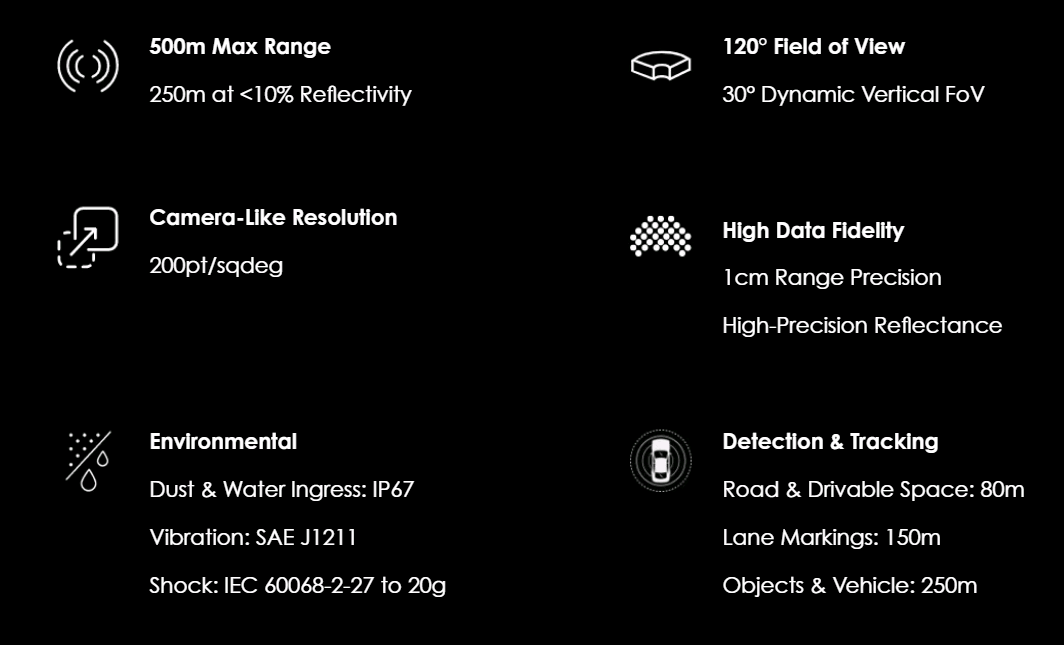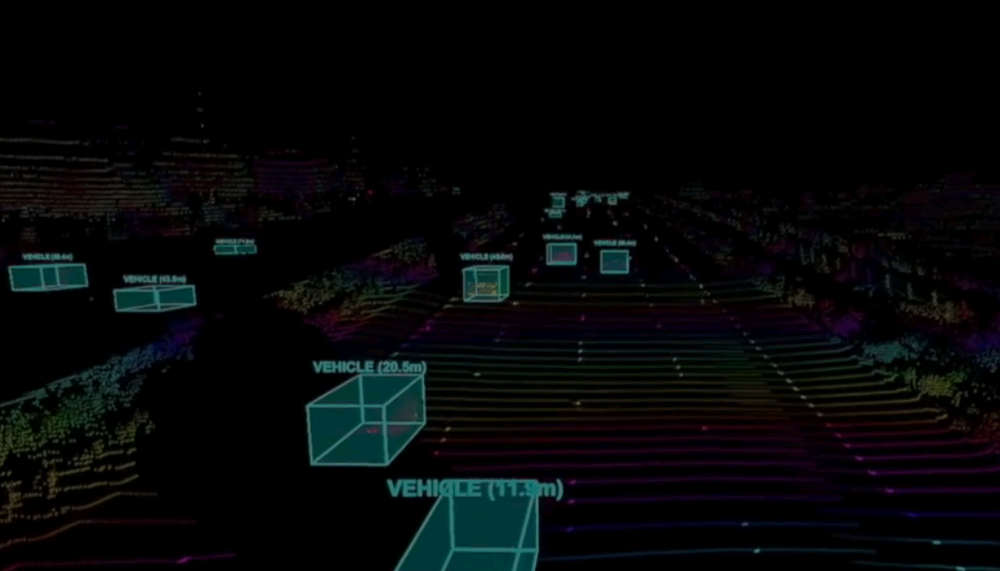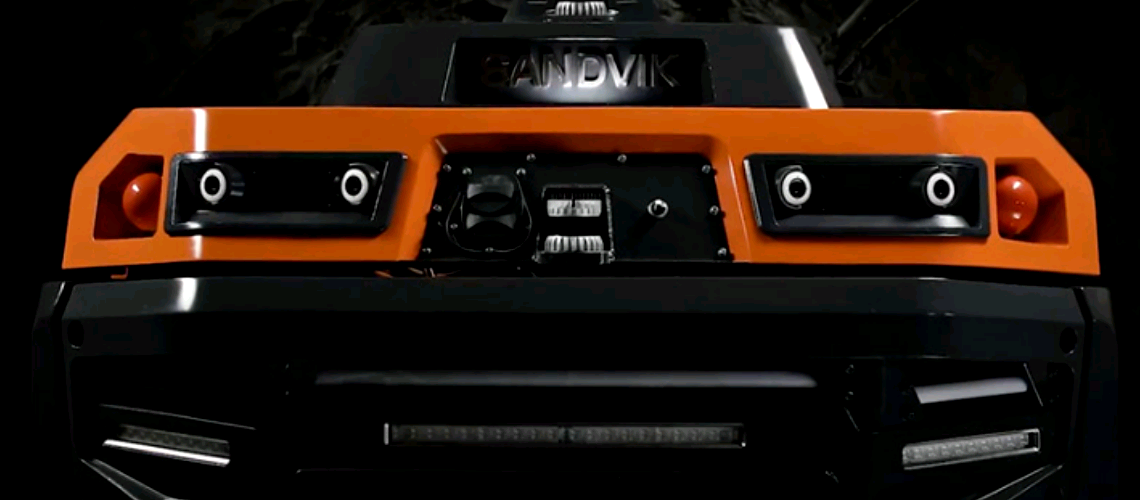Author: Liu Hong
Introduction
Solid-state Lidar is the future development direction without much dispute. However, what is the definition of full solid-state Lidar really needs careful consideration. In addition, only Lidar that can be mass-produced has the right to speak. Let’s take a look at how companies with different technical routes define their products.
Full Solid-state and Semi-solid-state Lidar
In theory, a radar with no moving parts at all is a solid-state Lidar, and the typical technical routes are Optical Phased Array (OPA) and Flash technology, which are considered as representative solutions for full solid-state Lidar. However, in recent years, some Lidar without mechanical rotating mechanisms are also collectively referred to as “solid-state Lidar”. Their performance characteristics include high resolution, limited level field of view (forward, not 360°), etc. However, these technical solutions still have some small moving parts (MEMS Micro-Mirrors), so strictly speaking, they can only be considered as “semi-solid-state”.
In fact, solid-state Lidar also has some disadvantages:
-
Cannot rotate 360 degrees, with limited scanning angle, can only detect the front; full-range scanning requires multiple Lidar arranged in different directions.
-
In addition to the central diffraction grating, it also forms other diffraction gratings, causing sidelobes effects of laser beyond the maximum power direction, and dispersing laser energy.
-
Optical phased array requires the working wavelength of the array to be around 1 micrometer, and the size of the array unit must be no more than 500 nanometers, so the processing difficulty is very high.
-
The reception window of traditional mechanical radar is very small, while solid-state Lidar has a large reception surface and poor signal-to-noise ratio, increasing the difficulty of scanning analysis.
Currently, the reliability, low cost, and long-ranging detection ability of solid-state Lidar are difficult for traditional products to simultaneously achieve, so there are so many companies competing in the research and development of solid-state Lidar. Although solidification, miniaturization, and low cost are the development trends of future Lidar, traditional mechanical Lidar still holds a large market share.
The competition in the market has reached a red sea edge
It is worth mentioning that Oryx Vision, an Israeli company founded in 2009, launched a new low-cost coherent solid-state Lidar system in November 2016 to meet the requirements of automatic driving applications, and received a B-round financing of 50 million US dollars in 2017.
Although the war to defeat traditional Lidar has just begun, the mass production time is still “expected”. Oryx has no follow-up action and had to discontinue in August 2019 due to intense competition in the Lidar market. Its direct competitor is Innoviz Technologies, an Israeli Lidar start-up, which completed a C-round financing of 170 million US dollars in June of the same year.## Ouster: Truly Digital & Fully Solid-State
Most of Oryx’s employees are physicists, optical engineers, and antenna engineers, using “high-end” long-wave Terahertz infrared lasers. Because this kind of invisible infrared light to the human eye has higher power and is difficult to be absorbed by water, it will not be disturbed by clouds, strong sunlight, and other factors.
Ouster, a U.S. company, has recently been in the limelight. In mid-May, Tego Tech, a domestic special zone unmanned driving scheme and operator Tafell Smart Cars, carried Ouster OS1 LiDAR, which is the mass-produced product of Ouster. Its latest product, ES2 solid-state LiDAR, still uses OS1’s unique digital architecture, making it the first fully-solid-state, high-resolution, long-distance digital LiDAR on the market, with a detection distance of more than 200 meters.

Ouster CEO and co-founder Angus Pacala said, “Why is digital LiDAR the future? When we founded the company in 2015, we wanted to design high-performance, reliable, and affordable sensors that the market needed. The long-term winner of LiDAR not only needs to meet customers’ current needs but also needs to meet their future needs by continuously and steadily improving performance and reducing costs to keep up with customer expectations. This is also the original intention of our research and development of digital LiDAR technology.”

The LiDAR industry is a fast-growing and ever-changing industry, where market demands for performance and cost are constantly increasing. Ouster’s self-developed CMOS chip ensures that the performance of digital LiDAR can continue to improve steadily for many years to come. ES2 uses “electronic scanning” to sequentially transmit from more than 10,000 lasers integrated on a single chip. These lasers are matched with a custom digital detector array, which can count trillions of individual photons per second. Therefore, ES2 can fulfill customer requirements for ranging, field of view, and resolution without any moving parts. The core technology of the lasers and detector arrays used in ES2 is the same as that used in the OS series rotating LiDARs and consumer devices such as iPhone and iPad Pro.
Take a look at some of ES2’s features:– Minimalist Architecture: Unlike traditional Lidar devices that consist of thousands of components, Ouster digital Lidar for long range, mid range, and short range applications has only one vertical-cavity surface-emitting laser (VCSEL) chip and one SPAD sensor chip based on complementary metal-oxide-semiconductor (CMOS) technology, reducing costs while improving performance and reliability.

-
Designed for Mass Production: The ES2 Lidar shares 86% of its components with the OS series, greatly reducing technological and production risks, enabling large-scale production.
-
Meets Autonomous Driving System Requirements: With a detection range of 200m+ (10% reflectance) and a working life of 100,000 hours, Ouster digital Lidar is suitable for advanced driver assistance systems (ADAS) at high speeds and is easy to integrate.
-
Firmware Updates: Ouster Lidar of any model can receive firmware updates.

-
Automotive Grade: The ES2 Lidar was designed from the beginning to meet or exceed automotive requirements for performance, reliability, and operating life. ES2 is simpler and more reliable than many “semi-solid-state” Lidar structures currently on the market.
-
Strictest Industry Standards: ES2 has passed certification tests for network security, shock and vibration, thermal cycling, protection level, and other standards, including ISO 26262 (ASIL-B), SIL-2, and ASPICE.
-
Production Consistency: The digital components used in both the ES2 and OS series are part of the consumer electronics supply chain, enabling consistent production on a large scale. The manufacturing, calibration, and verification of the OS series rotating Lidar have already achieved large-scale operation, and the ES2 solid-state Lidar will be produced directly on a large-scale production line at Ouster’s overseas manufacturing plant.
Pierrick Boray, a member of the Photonics and Sensors team at Yole, commented: “Like many other markets, the technological roadmap for the Lidar market is gradually shifting towards digitization. Although the transition may take some time, the results are usually the same: traditional products create the market, while digital products ultimately dominate the market.”
According to reports, the first batch of ES2 samples will be delivered in 2022, with an initial price of $600 for volume production projects that meet automotive standards. Ouster plans to achieve large-scale production by 2024, and eventually hopes to reduce the price to $100.Ouster has raised more than $140 million in funding, and so far has won more than 800 customers worldwide.
Innoviz: Upgrading Performance While Reducing Costs
Founded in 2016, Innoviz focuses on developing low-cost small-sized LIDAR systems to help achieve large-scale commercialization of autonomous driving. Currently, in addition to lasers, Innoviz has taken control of all key technologies, including chips, and has recently established partnerships with major manufacturers such as BMW and Samsung Auto network, raising more than $275 million in funds.
Innoviz’s technical route is the MEMS solid-state LIDAR mentioned above. Its new generation LIDAR sensor, InnovizTwo, released in October last year, provides significant performance improvements at 70% lower cost than the previous generation InnovizOne, with a sample time available in the third quarter of 2021. InnovizOne will be mass-produced in 2021, making its first production debut in BMW models.

Innoviz CEO and co-founder, Omer Keilaf, said: “For high-end models equipped with L3 autonomous driving, automakers typically pay up to $1,000 for LIDAR. For L2 level models, they only pay $400 to $500.”
These costs not only include physical hardware but also include related support software and the cost of developing and validating. In addition, large manufacturers do not directly purchase such important parts from start-ups like Innoviz. Therefore, the manufacturers cooperate with their trusted Tier 1 suppliers for manufacturing and integration. Thus, InnovizOne is produced by Magna and combined with other components of the L3 system used by BMW, such as the visual system based on Mobile EyeQ5 and the radar and computing platform of Ambofor.
InnovizTwo features include:
-
Configurable Region of Interest (ROI): Four separate controlled ROIs (one for each laser) for dynamic focusing in a limited field of view, allowing enhanced visibility and range without affecting bandwidth, resolution, or frame rate.
-
Multiple Reflections: Multiple reflections can be returned for each pixel and multiple points can be recorded and stored in a 3D environment. This is important when a laser pulse hits raindrops, snowflakes, or multiple objects on the path.- Gapless Pixels: In scanning mode, there are no gaps between adjacent pixels, which is crucial for building a safe perception system for autonomous driving vehicles. Otherwise, the system may miss small objects on the road related to collisions or people located in the gaps between point cloud data, resulting in catastrophic consequences.

-
Uniformly Distributed vFOV (Vertical Field of View): Provides unified resolution across the entire vertical field of view. This allows the system to obtain more data than other sensors, instead of focusing only on the center (horizon) and losing data when moving towards the edges. Its vertical field of view also has translational capabilities, supporting installation tolerances and different driving conditions such as different vehicle loads.
-
Sunlight and Weather Conditions Applicability: It has strong adaptability to environmental light sources (such as direct sunlight and dazzling light from oncoming cars) and adverse weather conditions (such as rain).
Luminar: Crossing Common Pitfalls of LiDARs
In early May, Pony.ai and LiDAR manufacturer Luminar jointly released an integrated autonomous driving sensing system, equipped with the Luminar Iris series of LiDARs. Companies like Pony.ai, which are in the mobile travel industry, should have used traditional mechanical LiDARs, but are now also choosing products that can be seamlessly integrated and installed on the roof of the car to achieve a 360-degree all-around multi-sensor fusion solution. Pony.ai plans to complete the production of the vehicle-level autonomous driving system by 2023.

Luminar, a startup company from the United States, was founded in 2012. Dr. Matt Weed, the company’s product director, said that out of thousands of unique ways to establish LiDAR sensors, hundreds are completely reasonable, which is also why many newly established LiDAR companies claim to be unique, but ultimately have difficulty in transitioning from research and development to automotive serialization production. The automotive industry has strict performance requirements, which require ensuring safety and reliability, as well as economies of scale.
After analyzing various ranging methods such as single photon detection, frequency modulated continuous wave (FMCW), flash LiDAR, scanning mirror, MEMS, and silicon photonics, Luminar chose the linear flight time (ToF) LiDAR technology route. Without using off-the-shelf components, the company started building a unique architecture from the chip level, which crossed many common pitfalls faced by other LiDARs. Currently, its hardware ASIC has been upgraded to the fourth generation.
Many people who pay attention to LIDAR technology are asking: What exactly is Luminar’s technology? Is it MEMS? Looking at the picture above, it can be seen that it uses the scanning method of “120°×30°FOV 2-axis scanning mirror, scanning only the laser instead of rotating the entire LIDAR”, which indicates that Luminar’s LIDAR is not a fully solid-state product.

Luminar’s technology has three major innovations, including laser wavelength, receiver technology, and the aforementioned integrated hardware and software, which form a castle of enhanced technology.
- Laser wavelength: Using fiber optic amplification to achieve 1550-nanometer high-power laser that is harmless to the human eye, which is 40 times more powerful than traditional silicon photoelectric systems. This not only improves the signal-to-noise ratio, but also increases the detection distance and point cloud resolution. Velodyne and other manufacturers use 905-nanometer lasers that are harmful to the human eye and cannot achieve high power. In terms of devices, using indium gallium arsenide (InGaAs) laser receivers reduces the cost of solid-state LIDAR to the range of 500-1000 US dollars. L2 uses a $500 receiver, L4 uses a $1000 receiver. 1550 nanometers are all-weather, with almost no impact in rain, snow, and fog.

- Ranging method: Luminar’s so-called linear flight time sends a short pulse to each pixel in the point cloud, with very fast measurement speed, enabling the immediate acquisition of reflectivity, with no range errors related to velocity. Other technologies claim to be better than time-of-flight (ToF), but at the highest levels, they emit less light and must collect the same amount of signal, which means that the time required for each measurement is significantly longer.

- Software: By analyzing the common architectural flaws, Luminar builds a path that does not compromise performance to meet the industry’s strict performance and economic requirements. Providing LIDAR hardware and related software to customers not only ensures robust safety, but also helps to achieve cost goals for autonomous driving.Hydra is a complete toolset that Luminar uses to test and develop various applications, designed to accelerate the implementation of various vehicle models for mass production. It can be equipped with one or more LIDAR sensors to achieve autonomous driving from highways to urban roads. Its maximum range for front and rear LIDAR sensors is 500 meters, with a range of 250 meters under conditions where reflectivity is greater than 10%. Trucks use three sensors (360° FOV), while passenger cars use a single sensor (120° FOV).

In March, Luminar announced a strategic partnership with SAIC Group to provide LIDAR sensors and related software systems for the latter’s R brand pure electric vehicles, which are scheduled for mass production from 2022. The R-TECH technology used by the R brand includes cutting-edge technologies such as intelligent driving, intelligent cockpit, and powertrain technology, especially the full-stack self-developed advanced intelligent driving solution PP-CEM, which creates an all-weather, long-distance, and multi-dimensional “six-fusion perception system” including LIDAR, 4D imaging radar, visual perception cameras, ultrasonic radar, high-precision maps, and 5G-V2X, achieving R PILOT 3.0 level autonomous driving. Its LIDAR is precisely Luminar’s product.
However, one thing that cannot be ignored is the “risk warning”: Luminar is currently the highest market value LIDAR company with a peak market cap of about $12 billion, and the current market value is around $9 billion, about four times that of the long-established LIDAR manufacturer Velodyne.
Similar to Tesla, Luminar pursues the highest performance and shortest delivery time. From its patent in September 2020, it can be seen that the dual-motor, belt-driven scanning mirror is an almost crazy design that contradicts the concept of miniaturized solid-state LIDAR design. Therefore, whether Luminar can easily succeed like signing a few strategic partnerships still depends on the attitude of capital.

Domestic enterprises still have gaps
Although achieving solid-state / semi-solid-state LIDAR and reducing costs may not be a problem for domestic manufacturers, when it comes to chip self-research, software modeling, and autonomous driving identification and decision-making, domestic LIDAR companies still need to catch up, especially in terms of system-level software, which is the core competitiveness of some foreign companies.
This article is a translation by ChatGPT of a Chinese report from 42HOW. If you have any questions about it, please email bd@42how.com.
